
Clam is a common name for several kinds of bivalve molluscs. The word is often applied only to those that are edible and live as infauna, spending most of their lives halfway buried in the sand of the seafloor or riverbeds. Clams have two shells of equal size connected by two adductor muscles and have a powerful burrowing foot. They live in both freshwater and marine environments; in salt water they prefer to burrow down into the mud and the turbidity of the water required varies with species and location; the greatest diversity of these is in North America.

The hard clam, also known as a quahog, round clam or hard-shellclam, is an edible marine bivalve mollusk that is native to the eastern shores of North America and Central America from Prince Edward Island to the Yucatán Peninsula. It is one of many unrelated edible bivalves that in the United States are frequently referred to simply as clams, as in the expression "clam digging". Older literature sources may use the systematic name Venus mercenaria; this species is in the family Veneridae, the venus clams.

Mercenaria is a genus of edible saltwater clams, marine bivalve molluscs in the family Veneridae, the Venus clams.
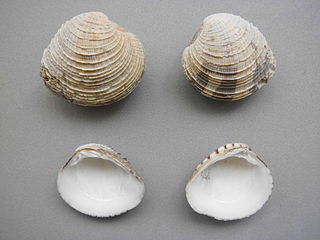
Chione cancellata, is a species of medium-sized saltwater clam, a marine bivalve mollusc in the family Veneridae, the venus clams.

Venerupis philippinarum is an edible species of saltwater clam in the family Veneridae, the Venus clams.
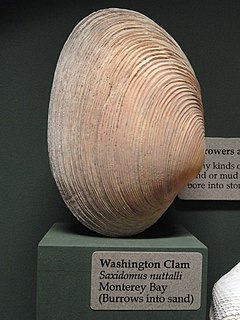
Saxidomus nuttalli is a species of large edible saltwater clam, a marine bivalve mollusk in the family Veneridae, the venus clams. Common names include California butterclam and Washington clam.

Mya truncata, common name the blunt gaper or truncate softshell, is a species of edible saltwater clam, a marine bivalve mollusk in the family Myidae.

Triviella millardi is a species of small sea snail, a marine gastropod mollusc in the family Triviidae, the trivias.

Triviella ovulata, common name "baby's toes", is a species of small sea snail, a marine gastropod mollusc in the family Triviidae, the trivias.

The Mediterranean mussel is a species of bivalve, a marine mollusc in the family Mytilidae. It is an invasive species in many parts of the world, and also an object of aquaculture.

Pecten sulcicostatus, the South African scallop, is a species of large scallops or saltwater clams. They are marine bivalve molluscs in the family Pectinidae, the scallops.
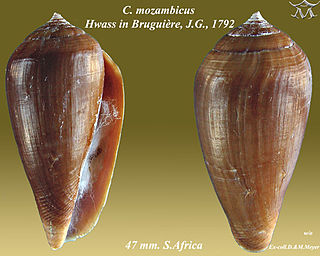
Conus mozambicus, common name the Mozambique cone or the elongate cone, is a species of medium-sized sea snail, a predatory marine gastropod mollusc in the family Conidae, the cone snails or cone shells.
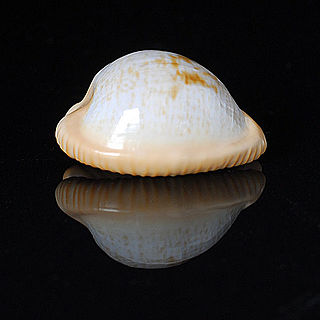
Cypraeovula fuscodentata is a species of medium-sized sea snail, a predatory marine gastropod mollusc in the family Cypraeidae, the cowries.
Onchidella maculata is a species of air-breathing sea slug, a shell-less marine pulmonate gastropod mollusk in the family Onchidiidae.

Scutellastra argenvillei or Argenville's limpet, is a species of sea snail, a true limpet, a marine gastropod mollusk in the family Patellidae, one of the families of true limpets.

Burnupena papyracea, common name the papery burnupena, is a species of sea snail, a marine gastropod mollusk in the family Buccinidae, the true whelks.
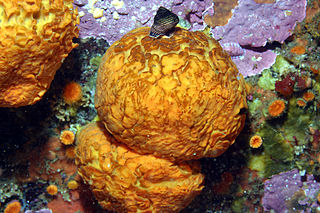
Tethya aurantium, also known as the golf ball sponge or orange puffball sponge, is a species of sea sponge belonging to the family Tethyidae. It is spherical in shape, with a warty surface, and grows to about 10 cm in diameter. Oscula are present on the upper surface. The surface has sharp protruding spicules which can cause skin irritation if touched.

Venus nux is a species of saltwater clam. They are marine bivalve molluscs in the family Veneridae, sometimes known as the venus clams.

















